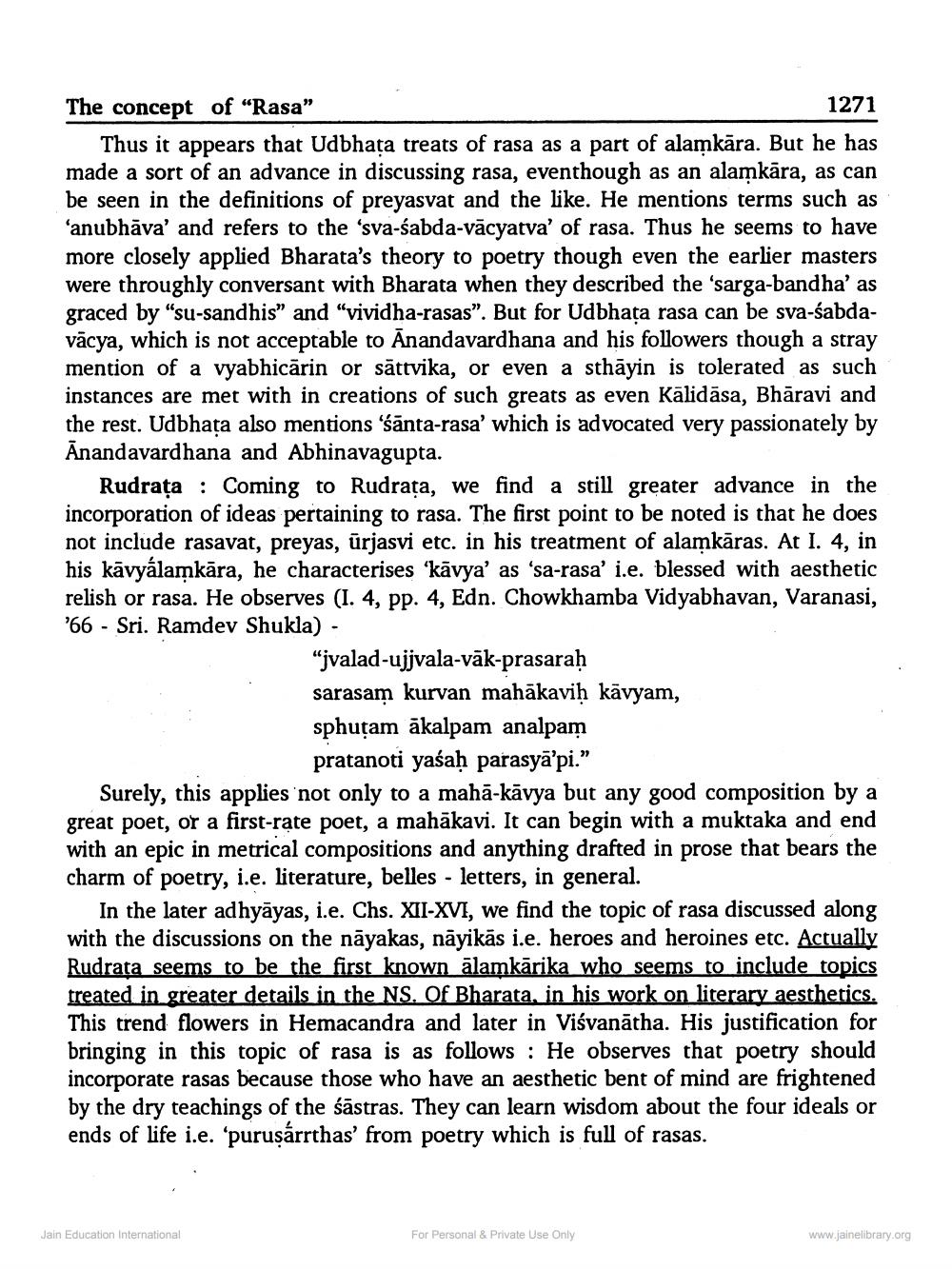________________
The concept of "Rasa"
1271
Thus it appears that Udbhața treats of rasa as a part of alamkāra. But he has made a sort of an advance in discussing rasa, eventhough as an alamkāra, as can be seen in the definitions of preyasvat and the like. He mentions terms such as 'anubhava' and refers to the 'sva-śabda-vācyatva' of rasa. Thus he seems to have more closely applied Bharata's theory to poetry though even the earlier masters were throughly conversant with Bharata when they described the 'sarga-bandha' as graced by "su-sandhis" and "vividha-rasas". But for Udbhața rasa can be sva-śabdavācya, which is not acceptable to Anandavardhana and his followers though a stray mention of a vyabhicarin or sattvika, or even a sthayin is tolerated as such instances are met with in creations of such greats as even Kālidāsa, Bhāravi and the rest. Udbhața also mentions 'santa-rasa' which is advocated very passionately by Anandavardhana and Abhinavagupta.
Rudrața Coming to Rudrața, we find a still greater advance in the incorporation of ideas pertaining to rasa. The first point to be noted is that he does not include rasavat, preyas, ūrjasvi etc. in his treatment of alamkāras. At I. 4, in his kavyalamkāra, he characterises 'kavya' as 'sa-rasa' i.e. blessed with aesthetic relish or rasa. He observes (I. 4, pp. 4, Edn. Chowkhamba Vidyabhavan, Varanasi, '66 Sri. Ramdev Shukla) -
"jvalad-ujjvala-vāk-prasaraḥ
sarasam kurvan mahākaviḥ kāvyam, sphutam akalpam analpam
pratanoti yaśaḥ parasyā'pi."
Surely, this applies not only to a mahā-kavya but any good composition by a great poet, or a first-rate poet, a mahākavi. It can begin with a muktaka and end with an epic in metrical compositions and anything drafted in prose that bears the charm of poetry, i.e. literature, belles - letters, in general.
In the later adhyāyas, i.e. Chs. XII-XVI, we find the topic of rasa discussed along with the discussions on the nayakas, nāyikās i.e. heroes and heroines etc. Actually Rudrata seems to be the first known ālamkārika who seems to include topics treated in greater details in the NS. Of Bharata, in his work on literary aesthetics. This trend flowers in Hemacandra and later in Viśvanatha. His justification for bringing in this topic of rasa is as follows: He observes that poetry should incorporate rasas because those who have an aesthetic bent of mind are frightened by the dry teachings of the śāstras. They can learn wisdom about the four ideals or ends of life i.e. 'purusárrthas' from poetry which is full of rasas.
Jain Education International
For Personal & Private Use Only
www.jainelibrary.org




